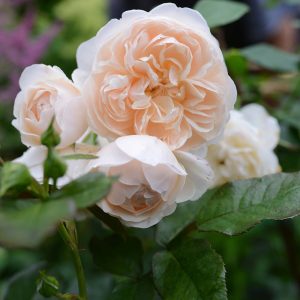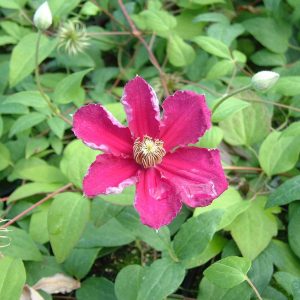Description
Lythrum genus. Widely known as loosestrife, these plants are perfect for planting round the edge of a pond or any other very wet area of your garden. They will self-seed widely if allowed to which can be a positive or a negative depending on your planting scheme, but if you don’t want any more of these lovely plants in the area the best thing to do is to deadhead them in late Summer or early Autumn, and this will stop the seeds developing and spreading.
Key Facts
- Common Name(s):Loosestrife ‘Robert’
- Hardiness:Fully hardy
- How big will I get? Lythrum salicaria ‘Robert’ can grow to a height of 0.8m and a spread of 0.4m.
- Did You Know That:The name Loosestrife is also used for members of the genus Lysimachia, which is not closely related?
Plant Calendar
A rough guide to how this plant will change through the year.
| Jan | Feb | Mar | Apr | May | June | July | Aug | Sept | Oct | Nov | Dec | |
| Flowering Time |  |
 |
||||||||||
| Foliage Colour |  |
 |
 |
 |
 |
 |
 |
 |
 |
| J | F | M | A | M | J | J | A | S | O | N | D |
 |
 |
||||||||||
 |
 |
 |
 |
 |
 |
 |
 |
 |
Care Guide

Soil Requirements
Lythrum salicaria ‘Robert’Poorly draining This plant can grow in soil with a wide range of pH levels, it is not picky about the pH level of the soil.

Best Position
Lythrum salicaria ‘Robert’ can handle either an exposed or a sheltered position and requires full sun to thrive, this consists of more than six hours of direct sunshine per day.

Maintenance
Lythrum salicaria ‘Robert’ will benefit from deadheading after it finishes flowering this will help the plant by redirecting energy from seed production to flower and root production. or cut back in Autumn if you want the seeds to be spread in the area

Pest, Diseases and Wildlife
Lythrum salicaria ‘Robert’ can have problems with slugs and snails, and it tends not to have problems with diseases. It is also known to attract bees, butterflies and other pollinators. It is not considered to be toxic.





